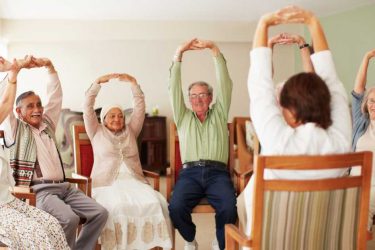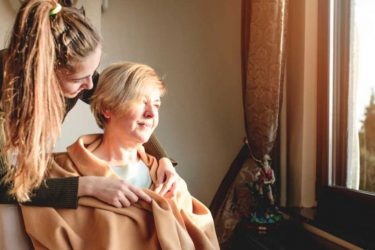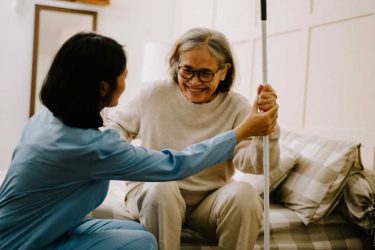Caring for someone with dementia asks a lot from a family. You want them safe, calm, and still themselves. You want clear steps, not fluff. I kept that in mind while writing this. I also looked closely at what KindredCare already publishes so this guide adds new ground, not a rehash of general home care talking points. Their posts focus on in home care and caregiver matching; this one leans into practical gear, proven tech, and where to get help in Canada right now.
What changes as dementia progresses, and why tools matter
Most Canadians living with dementia spend a long time at home. Families do most of the day-to-day work, so small fixes make a big difference. CIHI calls out common strategies that help people remain in the community longer. That’s the spirit here: simple steps, layered thoughtfully.
Dementia isn’t rare. The Alzheimer Society warns Canada could see roughly a million people living with dementia by 2030. That’s not abstract. It’s your neighbour, your parent, your partner. So let’s get concrete.
A simple daily toolkit that actually helps
Medication made easy
Start with the boring stuff that prevents crises. Use a weekly pill box, pharmacy blister packs, or an automatic dispenser if misses keep happening. Smart dispensers can raise adherence and cut caregiver overload in some studies, though results vary and setup needs a bit of patience. Keep it human: a written list stays on the fridge. Add phone reminders if they help.
For gentle prompts, place meds where the routine already lives, like by the kettle. It sounds too simple, but it works more than you’d think.
Communication that calms, not confuses
Short sentences. One idea at a time. Ask, wait, then ask again if needed. Sit at the same level and keep your body language relaxed. It feels slow. That’s fine. You’ll get better answers and fewer fights.
Visual cues beat long talks
Labels on doors and drawers. A large-font daily schedule near the breakfast table. A whiteboard for today’s plan. Low tech wins here, and it’s cheaper to test.
Safety tech that isn’t overkill
You don’t need a house full of gadgets. Pick one risk, then match a tool.
Falls
Wearable fall detection and home sensors keep improving. Reviews show promise with watches and motion sensors, yet accuracy still varies. That means we treat alerts as signals, not gospel. Try it for a week, tweak, and decide.
Kitchen
Automatic shut-off plugs or stove guards help for those “left the burner on” days. No brand needed here; your hardware shop or OT can point you to a device that cuts power after inactivity.
Night and bathroom
Motion lights, clear paths, no loose rugs. You’ll see fewer near-falls the same week you do this. Alzheimer Society checklists stress simple lighting and lock placement.
Wandering and getting lost
This is a big one. Six in ten people with dementia will get lost at least once. Preparation saves lives. Ontario’s Finding Your Way program puts it plainly and offers plans you can copy in any province. Pair those plans with ID and a responder network.
Two proven Canadian options:
- MedicAlert Safe & Found
A blue ID plus a 24-7 hotline and a national wandering registry. Emergency services can access health details and contacts fast. Data from the program suggests far quicker reunions when MedicAlert is part of the response. Cost exists, yet many families call it worth it. - Project Lifesaver
Offered by some Canadian police and Alzheimer Society chapters. It uses a small radio-frequency wristband. Search teams can home in even where GPS struggles, like dense buildings or wooded areas. Check your area; coverage is local.
If someone goes missing: call 911 right away. Have a recent photo, clothing details, health info, and a list of favourite places ready. The Alzheimer Society of B.C.’s wandering guide includes a prep kit you can copy.
Privacy, consent, and cameras
Before adding trackers or cameras, get consent if the person can still give it. Canada’s privacy regulator stresses meaningful consent, and even in care settings, less is often more. Start with door chimes and wearables that the person accepts. Revisit the plan as needs change.
Canadian help lines and local supports that actually answer the phone
You don’t have to figure this out alone. Here are lines and services families use most:
First Link by the Alzheimer Society
This is a single, practical entry point into education, support groups, and planning help. Call your provincial number or ask to be referred. A few examples:
Ontario 1-416-967-5900, British Columbia 1-800-936-6033, Alberta and NWT 1-866-950-5465. If you’re not sure which office to call, use the national number 1-855-705-4636.
811 health advice lines
Nationwide access, province run. In Ontario, call 811 or use Health811 online. In BC, HealthLink BC at 811 offers nurses, pharmacists, dietitians and more. Alberta’s 811 includes a Dementia Advice line. These lines are for non-emergency questions that still feel urgent at 9 pm.
211 for local services
Need adult day programs, meal delivery, transport, or caregiver groups near you? Call 211 for live referrals in many communities. Municipal and provincial guides steer residents to 211 for dementia supports and general seniors services. It’s quick, and you’ll talk to a person.
Evidence-based caregiver training
If you’re in Ontario, the Reitman Centre CARERS program teaches practical skills for dementia care in small groups. Many caregivers say this changed how their days feel. Ask your local Alzheimer Society about enrollment.
Money help you can claim in Canada
Tax rules are dry, but the dollars help. A short, plain rundown:
Canada Caregiver Credit (CCC)
If you support a spouse, partner, or other dependant who lives with an impairment, you may claim the CCC. The CRA sets the amounts each year and may ask for a signed note from a medical professional. The CCC often pairs with other credits.
Disability Tax Credit (DTC)
Eligibility isn’t based on the diagnosis alone. It hinges on the effects on daily life, including mental functions. If approved, it can lower taxes and open doors to other benefits. Talk to your clinician about the T2201 form.
Home Accessibility Tax Credit (HATC)
For renovations that improve access or reduce harm at home. The federal cap is up to 20,000 dollars in eligible expenses per year, which equals up to 3,000 dollars back. Think grab bars, a safer shower, or a stair lift prescribed for safety.
A provincial example: Nova Scotia Caregiver Benefit
NS pays 400 dollars a month to eligible caregivers providing 20 or more hours weekly to a low-income adult with high care needs. Call Nova Scotia Health Continuing Care at 1-800-225-7225 to be assessed. Other provinces have different programs; ask your local health authority or 211.
A one-week setup plan
You don’t need perfection. You need momentum.
Day 1
Do a 20-minute safety walk. Clear cords, add night lights, move rugs. Note one kitchen fix.
Day 2
Pick a medication system and write a complete med list. Tape it inside a cupboard.
Day 3
Set up a whiteboard with Today’s Plan. Three items only. Add mealtimes and one fun thing.
Day 4
Call First Link. Ask for a caregiver group and education sessions. Book something, even if you’re unsure.
Day 5
Order door chimes, install two. Try location sharing on a phone if your person agrees.
Day 6
Call 811 with two questions you keep Googling at midnight. Sometimes a short call eases a lot.
Day 7
Talk about ID. Consider MedicAlert Safe & Found or Project Lifesaver if available nearby. Prepare a “missing person” kit with a photo and key details.
Tough moments: what helps right then
- If panic rises, lower your voice and your pace. Sit, breathe, and try one simple sentence. Public Health Agency guidance on speech and body language helps. It looks basic; it works.
- If night restlessness starts, add a soft light path to the bathroom and a warm drink. Keep the TV off late.
- If refusals keep happening at care time, try again later, not louder. Small wins add up.
Caregiver burnout is real. The Alzheimer Society’s tips on stress remind you to take breaks before you crash. That’s not selfish. It’s strategy.
Quick answers to common questions
Do I need a smart home to keep someone safe?
No. Start with light, labels, and simple locks. Add one gadget later if a real problem persists.
Which tracker is best?
The “best” one is the one your person will wear or carry. In many Canadian communities, MedicAlert Safe & Found and Project Lifesaver add a responder network that plain GPS lacks. Availability varies by city.
Who will actually pick up the phone at 10 pm?
811 in your province. They triage and advise. If someone is missing or in danger, call 911.
Is there a single place to start in Canada?
Yes. Call your local Alzheimer Society through First Link. They connect you to education, groups, and planning help.
A note on tone and tradeoffs
You’ll see a little tech here and a lot of common sense. Some devices help a lot. Some feel like clutter. Be picky. Try, review, keep what works, return what doesn’t. Maybe that sounds blunt. That’s how real homes work.
If you need vetted help for a few hours a week or daily support, platforms like KindredCare focus on dementia experience and screening. Use them as one piece of a wider plan that includes the public supports above. That balance tends to hold up over time.
Useful links you can open now
- Alzheimer Society First Link: provincial phone list and referral options.
- Health advice lines: Ontario Health811 and HealthLink BC 811. Alberta’s 811 Dementia Advice Line.
- Wandering safety: Finding Your Way resources and MedicAlert Safe & Found.
- Tax help: Canada Caregiver Credit, Disability Tax Credit, Home Accessibility Tax Credit.
- Nova Scotia Caregiver Benefit details and phone line.
If you pull a few threads from this guide this week, you’ll feel some slack in the line. Not total relief. Just enough to breathe and plan the next move. That’s a good start for you and the person you care for.



